Matador Network's Blog, page 1014
September 13, 2019
Best border cities in Europe

The idea of seeing several major cities like New York City and Los Angeles in a week’s vacation is unimaginable to North Americans, but it’s not laughable for those who reside across the pond, where you can drive between entire countries in less time than it takes to drive the California coast. Overly eager border hoppers run the risk of blowing past some great cities, however, some of which will even make them feel like they’re seeing two countries at once. These European border cities offer twice as much character as more easily defined locales, taking traits and traditions from both their home countries and neighboring nations. Jettison them to the top of your to-travel list if you want to double down on culture and cuisine next time you fancy a trip to the Old Continent.
1. Bratislava, Slovakia

Photo: emperorcosar/Shutterstock
Slovakia’s culture-melding capital borders not one but two nations: Austria and Hungary. It’s only an hour to Vienna by car and roughly two to Budapest. On the Slovakian side, all three countries meet about 15 miles south of Bratislava in a village called Čunovo, where a small monument stamped with an insignia from each nation marks the tripoint. For years, both German and Hungarian were more widely spoken than Slovak in Bratislava, and today, a majority of the older generation still speaks German as a second language.
Nothing betrays Bratislava’s crossroads location more than its architecture and cuisine. Meals tend to be meat-heavy, featuring everything from schnitzel and goulash to potatoes, dumplings, and fresh sheep’s cheese. It’s a flavor profile anyone who has traveled through Central Europe will recognize, yet there’s nowhere better to try a Bratislava roll, a cross between a soft pretzel and a croissant, than in the city that gave it its name. After touring castles, cathedrals, and palaces built by Hungarian nobles, bite into Bratislava’s signature baked good at a cafe, which no doubt lives up to nearby Vienna’s famed coffee culture. Better yet, take dessert down to the Danube at sundown.
2. Perpignan, France

Photo: trabantos/Shutterstock
If someone dropped you off in Perpignan blindfolded, you might take one look at the rose-brick Le Castillet fortress when the cover comes off and guess you were somewhere outside Seville. And you wouldn’t actually be that far off, geographically or historically. About 20 minutes from the Spanish border by car, and three hours to Barcelona by train, Perpignan was the capital of the Kingdom of Majorca during the 13th and 14th centuries. To date, the Palace of the Kings of Majorca stands like a sentinel in the old town under the watchful gaze of the Pyrenees, and Catalan structures like Le Castillet showcase the city’s Spanish heritage.
Taking a cue from their fun-loving neighbors, the people of Perpignan are no stranger to a fiesta. The city’s events calendar is full throughout the year, with lively festivals like Les Jeudis de Perpignan, a summer arts fest during which music, dance, and even minor acrobatics take over the city’s bars, bistros, and entire streets. When they aren’t setting the stage for local celebrations, Perpignan’s eateries plate up rustic French cuisine with Catalan influences.
3. San Sebastián, Spain
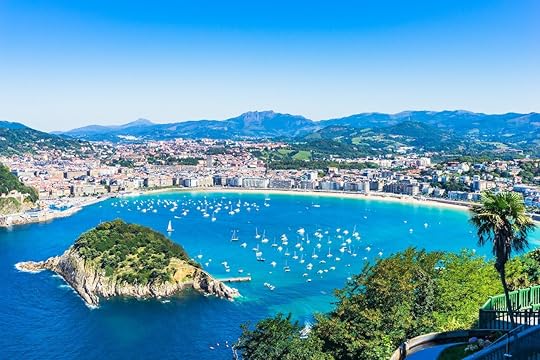
Photo: Nel727/Shutterstock
San Sebastián is located in Basque Country, a special slice of Europe where northern Spain meets France that has its own language, heritage, and customs. The city has a fine museum on Basque culture, the San Telmo Museum, though many visitors prefer to make a beeline for the beach. San Sebastián sits on a golden, circular bay that could easily pass for the French Riviera — in part because of its hefty prices by Spanish standards. (It helps that there’s an esteemed international film festival held here every September, too.)
The city rose to fame during the Belle Epoque, when the Parisian architecture of the day left its mark on the city, gifting it grand buildings like the Teatro Victoria Eugenia and Hotel Maria Cristina. Between sightseeing excursions, fill up on pintxos, or Basque tapas, then put on your fanciest stretchy pants for French fine dining at night. San Sebastián has more Michelin-starred restaurants per capita than anywhere else in the world, much of which pays homage to the world-class culinary traditions from right across the border.
4. Kirkenes, Norway

Photo: artincamera/Shutterstock
Kirkenes sits just above the Arctic Circle, a stone’s throw from the Russian border and not much farther to Finland. Unsurprisingly, there’s a large Russian population in Kirkenes; on the last Thursday of the month, a Russian market takes over the city’s main square where vendors peddle linens, crystals, and porcelain like you’d see in St. Petersburg alongside quintessential matryoshkas, or nesting dolls. Every year, the proud border city also hosts a border-crossing festival called Barents Spektakel filled with music, cinema, seminars, markets, and more, all in celebration of a border that was closed until the end of the Cold War.
A visit to the Sør-Varanger museum will teach visitors everything they need to know about Kirkenes and its history, shaped largely by Russian rule and conflict, as well as Finnish immigration. When all of that learning makes you hungry, enjoy the city’s mix of Nordic and Russian dishes, as well as Sámi cuisine from the traditional inhabitants of Lapland.
5. Aachen, Germany

Photo: Dan Race/Shutterstock
Like Bratislava, Aachen is near a tripoint — only here you’ll see the German, Belgian, and Dutch flags flying. To make a day trip of seeing where the three countries meet, check out the Labyrint Drielandenpunt maze and recreation area, complete with an observation tower on the Netherlands side where you can soak in the scenery of all three nations at once.
The westernmost city in Germany, Aachen can trace its history back beyond Charlemagne, who commissioned the Aachen Cathedral in the late eighth century. It’s a spa town created from an ancient Roman settlement that today houses not only one of the oldest cathedrals in Northern Europe but also an impressive collection of medieval religious artworks at the Aachen Cathedral Treasury. After sightseeing, slip into one of the city’s thermal baths, and before you leave, be sure to try an Aachener Printen. The ubiquitous, gingerbread-like cookie is thought to have been brought over by Belgians in the 15th century and shouldn’t be missed, no matter its origin.
6. Trieste, Italy

Photo: Sopotnicki/Shutterstock
Trieste borders the thin section of Slovenia that juts out into the Adriatic. Immediately south is Croatia, which is under an hour from Trieste in its own right. The city changed hands many times over the years, belonging at different times to the Romans and the Habsburgs, when it was a major seaport during the Austro-Hungarian Empire. Following World War II, Trieste also became a goalpost of the Iron Curtain that divided the Eastern and Western blocs, and it was only annexed by Italy in 1954.
In the glory days of its art scene, Trieste was a literary city. Today, it’s filled with cafes where philosophers and writers from across Europe once mingled, as well as several venues where you can take in theater and opera. Slovenian and Austrian influences aside, Trieste is a veritable melting pot where Serbian Orthodox churches sit around the corner from synagogues and Roman cathedrals. Then, just when you’ve forgotten where in Europe you are, there’s always a wide piazza that’ll remind you you’re in Italy.
7. Lille, France
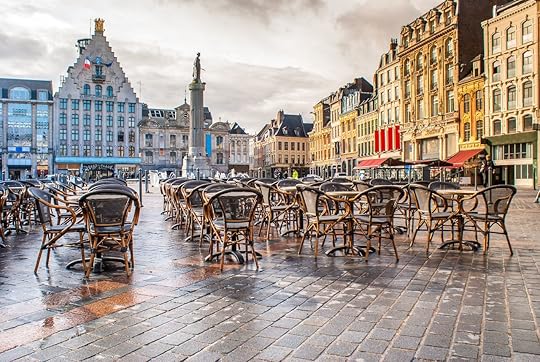
Photo: Dziorek Rafal/Shutterstock
Long overlooked as a mere stopover between Paris and Brussels, Lille is slowly coming into its own as a destination, serving up French city life with a side of Belgian flourish. One of the tastiest ways to experience the culture anywhere is to see what’s cooking. Lille’s kitchens are usually busy stewing things in beer: beef, rabbit, mussels, and so on. Though most think wine when they think of France, the city’s Flemish roots win out in the beverage arena, with blonde ales and malty lagers overwhelming most drink menus. After sampling the city’s favorite cheese, Maroilles, sate your sweet tooth with a Belgian waffle or French crêpe if you prefer pancakes.
When it’s time to sightsee, lean into the city’s cycling culture for an on-the-go tour of the old town, where red bricks and belfries add Flemish flair to the cityscape. Then, just outside the center, visit the Palais des Beaux Arts de Lille to see one of the largest collections of fine arts and antiquities in all of France, followed by a market tour. Lille also has a large student population, which not only makes it feel even more cosmopolitan but also guarantees some good nightlife. Don’t fret if you’re a bit eager with those Belgian beers: There’s plenty of friteries, or French fry stands, open late around the city. 

More like this: 6 places where you can be in two countries at once
The post 7 border cities that’ll give travelers a double dose of European culture appeared first on Matador Network.

Taste the Island in Ireland
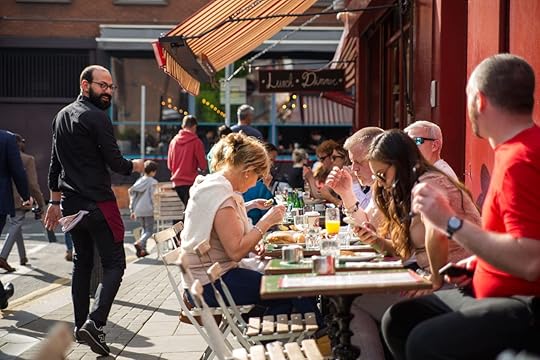
Italy, France, China: When you think impeccable cuisine, these are probably the countries that come to mind. Ireland, on the other hand, might not make the list — though not from lack of trying. Ireland has been experiencing a culinary revolution in at least the past five years. Being an island shot through with rivers, Ireland has access to remarkable seafood, and its lush green farmland produces rich, creamy butter and cheese. Yet not many people seem to acknowledge that Ireland is a haven for food lovers (most tourists seem more keen on exploring its ruins and whiskey). A new food festival happening this fall, called Taste the Island, hopes to change all that.
At three months long, Taste the Island is billing itself as the “world’s longest food festival.” It runs for three months, from September to the end of November, and includes around 700 events and activities.
Participants can go on foraging hikes, learn to fish, visit breweries and distilleries, take cooking classes, and dine at pop-up restaurants. Plus, the Meet the Maker series lets guests get an insider’s view of the producers that make some of Ireland’s best food and drink, from ice cream makers to beer brewers.
According to Lonely Planet, Taste the Island also overlaps with smaller festivals with more specific focuses, including Armagh Food and Cider Festival, Murphy’s Oyster and Seafood Festival, Clonmel Applefest in Tipperary, and the Festival of Honey in Wexford.
Ireland’s tourism board hopes to run the Taste the Island campaign for the next three years, and will incorporate a number of events highlighting different regions of the country. For instance, Taste Causeway from October 7 to 27 will host several food tours throughout Ireland’s Causeway Coast — including one that is beer-themed and another all about the humble potato. Meanwhile, Savor Kilkenny, from October 24 to 28, will highlight the exceptional meat products farmed in Kilkenny’s idyllic countryside. Yet another food tour will help visitors get acquainted with Belfast.
Of course, would it really be fall in Ireland if there wasn’t a pagan ritual to participate in? Fire of Samhain Púca Food Festival takes place from October 21 to November 2, for all you Halloween fanatics out there, with a kickoff party lighting fires to symbolize the end of summer.
If you’re eager to gain a more in-depth understanding of Ireland beyond Guinness and U2, then Taste the Island is the time and place to do it. If you love to eat, all the better, but the festival is so much more than food. It’s agriculture, history, and tradition — the true spirit of the Emerald Isle. 

More like this: The best non-touristy pubs in Dublin to drink at instead of Temple Bar
The post The ‘world’s longest food festival’ celebrates Irish cuisine appeared first on Matador Network.

KitKats in Japan are changing

Nestlé is embracing sustainability in a surprisingly creative way: The Japanese arm of the company, which produces KitKat bars famous for flavors like green tea, melon, and wasabi, plans to ditch plastic packaging and replace it with paper that can be folded into origami.

Photo: Nestlé

Photo: Nestlé
Instructions for how to fold an origami crane are also printed on the updated packaging. Mini KitKat bars will be the first to transition to the new paper packaging, but Nestlé plans to package its larger KitKats in origami paper by September 2020. By switching to paper packaging, Nestle hopes to save at least 380 tons of waste annually.
The move is one part of Nestlé’s initiative to exclusively use 100 percent recyclable or reusable packaging for all of its products, from candy to water, by 2025. Last year, the company announced its plans to go totally waste free, even going so far as to open the Nestlé Institute of Packaging Sciences this week.
The newly opened institute will develop new forms of packaging that won’t add to the already massive plastic pollution in Earth’s oceans. Nestlé decided to create the institute because the company felt that its suppliers were not working fast enough to create sustainable packaging.
The company is finally taking much-needed action to change its policies: Greenpeace found that Nestlé used 1.7 million tons of plastic in 2018, much of which ended up in the ocean and on beaches.
“Our vision is a world in which none of our packaging ends up in landfills or as litter,” Nestlé CEO Mark Schneider said at the opening of the Institute of Packaging Sciences. “We support the development of local recycling infrastructure and deposit schemes to help shape a waste-free world.” 

More like this: 6 steps you can take today to become a zero waste traveler
The post Nestlé Japan is dumping plastic KitKat packaging for origami paper appeared first on Matador Network.

Arcadia Earth exhibit in NYC

“Arcadia Earth” is an exhibit for the Instagram generation — it’s colorful, immersive, and just playful enough for phone-clad millennials to throw themselves at it. But it would be unfair to say that the exhibit is nothing but a pretty background for selfies.
The exhibit is, first and foremost, a show with a purpose: opening visitors’ eyes to the state of our planet through immersive art installations and giving them tips on how to reduce their impact.
And there’s truly nothing like walking into a coral-like tunnel made of 44,000 discarded plastic bags (the number used in New York City every minute) to make you think about our responsibility in the whole mess that is our planet currently.

Photo: Arcadia Earth
With 18 interactive rooms designed by Valentino Vettori, the exhibit highlights the biggest ecological issues of our time via physical art (all made of upcycled, environmentally friendly, and biodegradable materials), as well as augmented reality, virtual reality, projection mapping, and interactive environment. You can use your iPad to visualize sea creatures in a recreated underwater world; put yourself in the flippers of a diver by donning VR glasses; or think about all of the plastic polluting our oceans by walking among the trash-made jellyfish dangling from the ceiling.

Photo: Arcadia Earth
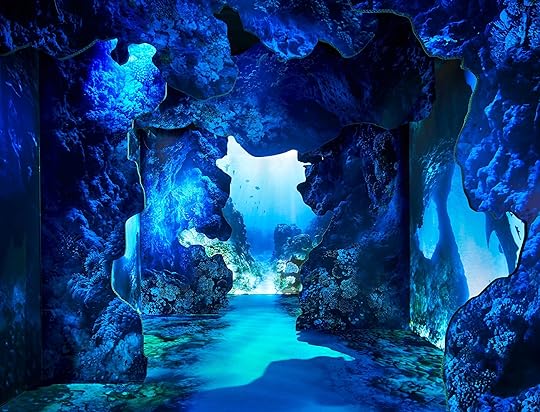
Photo: Arcadia Earth

Photo: Arcadia Earth
Signs throughout the exhibit provide information to visitors (like the number of plastic bags used in NYC every minute) and tips on how to help (for the love of God, say no to plastic bags).
There are also panels and talks scheduled, designed to motivate people by sharing strategies to create a healthier world, such as eating less meat, wasting less food, and reducing single-use plastic.
Tickets for the museum are available online. The museum, located at 718 Broadway in New York City, will remain open until January 2020, and a tree will be planted for every ticket sold. 

More like this: 7 outdoor museums you should visit this fall
The post This immersive art exhibit is a beautiful call for environmental action appeared first on Matador Network.

Turkey to flood ancient settlement
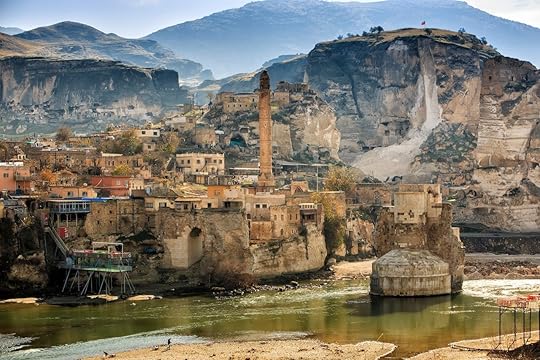
A dam project in Turkey is stirring controversy with its plans to flood the ancient village of Hasankeyf, one of the world’s oldest continuously inhabited settlements. Built on the banks of the Tigris River, Hasankeyf is a living museum chronicling 12,000 years of human history with its Neolithic cave network, cliff-carved churches and mosques, centuries-old citadel, tombs, and medieval bridge spanning the river. It’s currently home to some 3,000 people who face displacement as the Turkish government seeks to build a massive dam across the Tigris.
The project was first proposed in the 1950s, but it was in 2006 that work officially began on the Ilisu Dam and hydroelectric power plant. Now, the dam is nearly finished, which means trouble for the area’s inhabitants. Hasankeyf is one of 199 settlements that will be submerged due to the reservoir created by the dam. The Turkish government has given residents roughly one month to evacuate. In total, around 80,000 people are expected to be driven from their homes, not to mention the vulnerable species and archaeological relics being threatened.
There’s been pushback against the dam since its conception. The year it broke ground also saw the creation of the Initiative to Keep Hasankeyf Alive, a grassroots campaign that has united national activists and organizations in protest of the dam. Activists have appealed to the Turkish government to pursue protected status for the ancient village, but their requests have been denied. As the project carries forward, the residents of Hasankeyf and its neighboring settlements can only wonder when exactly their homes will be destroyed. 

More like this: The 29 new UNESCO World Heritage sites and why you should visit them
The post Turkey to flood 12,000-year-old settlement for dam project appeared first on Matador Network.

Queen of England hiring housekeeper

The Queen of England has been a busy boss lately, hiring a chef and social media manager in 2019 alone. Now, she needs a housekeeper at Buckingham Palace.
The job involves upkeep of the palace, as well as caring for a range of items to ensure that the iconic residence always looks its best. You will also be expected to attend to guests and work front-of-house to support functions and events. It’s safe to say that if you’re looking to further your career in the hospitality industry, this gig is a pretty good resume builder.
According to the job description, previous hospitality experience isn’t essential. What is required, however, is that the applicants are detail-oriented and always aim for the highest standards. The posting also asks that candidates be “well organized and with good time management skills.”
Although you will be based in either Buckingham Palace or Windsor, you will also have the opportunity to travel to other royal residences. Pay includes an extensive benefits package, 33 days of vacation, a 15 percent employer contribution pension scheme, and training and development. You also have the option to live on the property, for which there would be a salary adjustment.
Applications will be accepted until September 15, with interviews taking place on October 2. 

More like this: All the British royal family’s residences that you need to check out
The post The Queen of England is looking for a live-in housekeeper appeared first on Matador Network.

September 12, 2019
Most beautiful monasteries in Ladakh

In the far northern reaches of India is a high-altitude desertic region known as Ladakh. The area was part of the former Tibetan Kingdom until the 13th century, but even after Tibet ceased direct influence, it remained largely under the control of Buddhist kings until the 19th century. During that time, many fortified palaces and monasteries were built on the hilltops between the arid valleys; many of them still stand today against the beautiful snow-capped mountains.
The fast-flowing rivers and high peaks of Ladakh have attracted rafters, climbers, and trekkers from around the world in recent years. But if you’re more into architecture, religion, and history than sweating it out on a hike, the region is a great spot to check out. Here are seven Buddhist monasteries you should not miss when in Ladakh.
1. Thiksey

Photo: Dmitry Rukhlenko/Shutterstock
Thiksey is a complex that consists of 10 temples or prayer rooms, a nunnery, and an assembly hall, all of which cascade down a small hill 12 miles east of Leh, the capital of Ladakh. Thiksey is known to have a distinct resemblance to Lhasa’s Potala, the former seat of the Dalai Lamas, and its fort-like architecture and strategic location perched on a hillock meant it could be easily protected from the invading Mughals who often attempted to deface Buddhist temples in the 17th century.
The buildings are arranged down the slope of the hill deliberately in order of importance, with the main temples situated at the very top. The most striking of these temples houses a large statue of Maitreya Buddha, or the future buddha, which is two-stories high and the largest such figure in Ladakh. It was erected to commemorate the visit of the Dalai Lama to Thiksey in 1970 and took four years to complete. To reach it, visitors can climb through the narrow passageways between the whitewashed buildings and will likely pass young monks going about their duties on the way.
Just slightly towards the rear of the complex, the monastery operates a restaurant open all day for visitors. It is perhaps the monastery’s most unexpected attraction and has some of the best North Indian food you can eat at very reasonable prices.
The most popular time to visit Thiksey is early in the day, to witness the morning prayers. However, if you want to have the place to yourself, go in the evening before it closes at 7:00 PM. The annual Gustor festival is also a popular time to be in Thiksey. Held in October or November, depending on the Tibetan calendar, the festival is a great place to witness the famous masked dances performed by the lamas.
From November to May the monastery remains permanently closed to visitors due to the harsh winter conditions in the area.
Where: Thiksey is 12 miles from Leh and can be visited by either public bus or private taxi hire.
2. Lamayuru
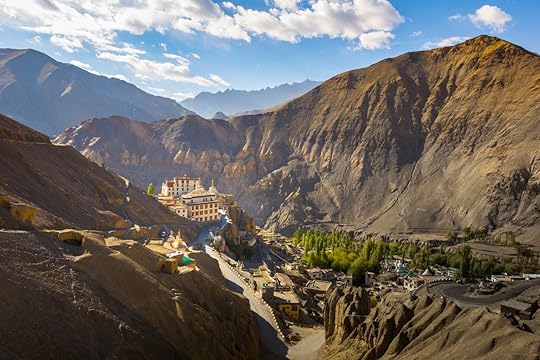
Photo: AkeTang Photo/Shutterstock
The imposing monastery at Lamayuru, known locally as tharpa ling or the “place of freedom,” is the oldest in the region. The central gompa, or temple, dates back to the 10th century while the remainder of the complex was later built around it, most of which was completed in the 16th century under King Namgyal. Although it saw heavy destruction in the 19th-century Dogra invasion of Ladakh by Muslim invaders from south Kashmir, it has since been fully restored.
If you are coming from the direction of Srinagar or Kargil, it is perhaps the first monastery you will come across as you enter Ladakh and is a beautiful introduction to the region. The ancient complex is seemingly built into the unusual rock formations of the surrounding mountains and almost blends into its environment.
The main temple at the top of the mound is painted in the typical white color with red details around the flat roof and windows. The white walls represent the buildings’ importance for religious administrative purposes, whereas the red-colored walls are reserved for the main temples. The sprawl of the complex houses around 150 monks, although it was once home to up to 500 in earlier days.
The monastery complex is encircled by a small village of the same name, which offers plenty of accommodation if you wish to stay and revel in the spirituality of the place or attend the annual festival known as Yuru Kabgyat. The festival, generally held in June or July each year, attracts Buddhist devotees from near and far, as well as many tourists who wish to witness the masked dances.
Where: Lamayuru is between Kargil and Leh, around 79 miles from Leh. It can be visited by either public bus or private taxi from either place.
3. Alchi
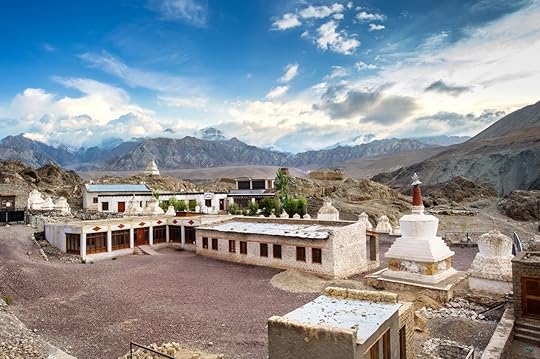
Photo: theskaman306/Shutterstock
Concealed among the folds of the mountains off the main highway, Alchi’s slightly hidden location meant that it was able to escape much of the damage that was inflicted on other Buddhist monasteries in the region during the Mughal and Dogra invasions. As a result, its nearly 900-year-old murals and wall paintings are still intact and well preserved.
The complex is spread out between multiple temples, shrines, an assembly hall, and the monastic school. Its most distinctive feature is that it is uniquely decorated with intricate wood carvings around the temple entrances, colourful murals of thousands of buddhas, and depictions of historical events on the interior walls.
As you walk between the main temples and shrines, you will pass many white chortens or stupas around the complex. (Note that you should customarily pass them in a clockwise direction.) These Buddhist structures, some of which date back to the 13th century, house important relics. They are considered decorated gateways to the buildings.
The village surrounding the monastery is dedicated to serving its many visitors. To reach the monastery you’ll have to wade through all the souvenir stalls, as well as some cafes and guesthouses, which you can use if you plan to linger for a while.
Where: Off the main highway between Kargil and Leh, 43 miles away from Leh. It makes for a nice stop on the long journey between the two towns or visited directly from Leh on a day trip by taxi.
4. Diskit

Photo: Ivanov Oleg/Shutterstock
Taking the adventurous trip north of Leh to Nubra Valley is one of Ladakh’s most popular excursions. The high-altitude valley is most famous for its unbelievable landscapes of high peaks and sand dunes, where double humped camels roam. However, a visit to the valley’s oldest and largest monastery at Diskit, the most populous town north of Leh, is similarly worth your time.
The monastery complex dates back to the 14th century and requires a steep climb to explore its whitewashed buildings, which are layered down the side of the hill. It was constructed in a similar style to Thiksey in a strategic location with buildings ascending in order of importance. At the top you’ll find the main prayer hall, which houses a huge ceremonial drum made from animal skin. The complex is home to around 100 monks, whose kindness may land you a cup of butter tea or a bowl of thukpa soup.
A 100-foot statue of Maitreya Buddha has been recently constructed near the monastery, and the view from the statue platform is sublime. It faces the Shyok River, and from up there you can see the entire Nubra Valley stretching from Pakistan to Tibet. It is intended to symbolize peace and protection in a part of the world that still sees tension. The best time to visit the complex is at sunset when the golden hues project a perfect light through the valley.
Most people stay in Diskit village for the night after making the arduous trip over Khardung La road pass, once considered the highest motorable road in the world. Among the numerous accommodation options there, some even offer nice views of the monastery.
Where: Diskit is 72 miles north of Leh and requires passing over Khardung La road pass at 17,580 feet. It is most commonly done in jeep tours or on hired motorbikes; however, there is also the occasional local bus that makes the trip. The road is only open in summer months.
5. Spituk
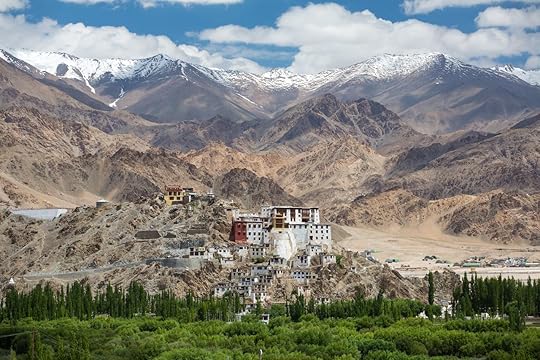
Photo: Mazur Travel/Shutterstock
Only a short distance from Leh, Spituk is one of the most accessible monasteries but somehow also one of the least visited. Its location offers one of the best views of the region’s capital town and the valley below, which you can enjoy without the crowds.
Although it may appear small, the complex is home to around 100 monks. After passing the small stupas lined at the entrance, the three-story, white buildings of the monastery are clustered together on the side of the hill. Here you will find a small museum that has a rich collection of old ceremonial masks, traditional religious paintings, and weapons used to protect Ladakh from invaders.
Just a short climb to the top of the hill sits the Mahakal Temple, painted in the traditional red color. This is where the statue of Goddess Kali is housed; however, you’ll have to attend the annual Gustor festival in January to catch a glimpse of it since it is kept under a veil for most of the year.
The best time to visit the monastery is at either sunset or sunrise, as on a clear day you will get to see the white peaks of the Stok mountain range around Leh turn a brilliant orange with the rising or setting of the sun. It’s also possible to witness the morning prayers at the same time, with fewer crowds than Thiksey.
Where: Spituk is around five miles from Leh and can be walked in around two hours; however, there are also local taxis available to make the round trip.
6. Hemis
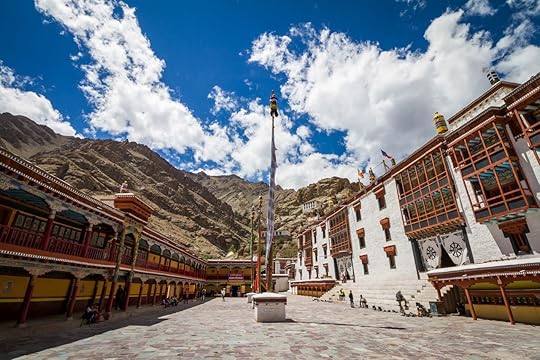
Photo: illpaxphotomatic/Shutterstock
Built on the west bank of the Indus River, Hemis Monastery is the largest Tibetan monastery in the region. It was established in the 17th century. The presence of various ancient meditation caves nearby, though, indicates that the monastery may have been used as a temple as far back as the 11th century.
The complex’s construction is a remarkable feat as it was assembled between a gorge in the Hemis National Park at an elevation of 12,000 feet. The monastery is built around a main courtyard where the annual festival dedicated to Guru Rinpoche, or the Second Buddha, is held every year in June or July. The festival showcases traditional musical performances, prayers, and masked dances. It’s a popular celebration to visit for both Buddhist pilgrims and tourists alike, and it’s worth organizing logistics in advance if you plan to visit during this time.
The buildings are intricately decorated with traditional Tibetan wood carving and paintings around the windows and doors. One of the buildings houses a small museum with a collection of religious paintings, bronze statues, and old weapons.
As in many of the monasteries in the region, you’ll find offerings made by pilgrims — such as money, food, and bowls of water — scattered inside the main prayer hall and particularly at the feet of the statues of Buddha and Guru Rinpoche. It is believed that making an offering to Buddha is an act of procuring good karma. It is also possible to make donations to the monastery to help in its preservation.
Where: Hemis is 28 miles from Leh. It is usually visited as either a day trip or in conjunction with a visit to the Hemis National Park, which is a sanctuary known for its high density of snow leopards.
7. Shey
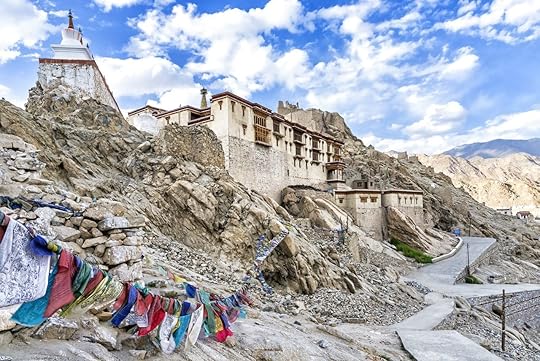
Photo: Francesco Dazzi/Shutterstock
Found inside the old Royal Palace at Shey, this monastery was built in the 17th century by the then King of Ladakh, Deldan Namgyal, in memory of his father. The palace was used as a summer retreat for the royal family in Ladakh before they fled following the Dogra invasion in the 19th century. You will pass stupas of varying sizes, some in rows and some scattered along the road, as well as across the hilltop, marking the spiritual importance of the area.
Characteristic of many of the monasteries in Ladakh, a short climb is required to reach the main complex where you’ll find the old palace building, as well as the main monastic temple. It is far smaller than nearby Thiksey and the palace is mostly in ruins. However, the main temple inside the monastery houses a large copper statue of Shakyamuni Buddha, which is the second largest of its kind in Ladakh. The copper used to make the statue was mined in nearby Zanskar and later plated with 11 pounds of gold. The walls surrounding the figure are adorned with detailed paintings displaying the 16 arhats, the Buddhist saints who have achieved Nirvana or enlightenment.
The attraction of Shey does not only lay only in the monastery but also in the beautiful view of the surrounding valley from the main temple and palace. From there, you can see as far as the villages of Thiksey, Stakna, Stok, and Leh, as well as their prominent monasteries jutting out from their hillocks.
Two festivals are celebrated each year at Shey. One celebrates the start of the sowing season in July or August, during which local farmers hope for a successful year. The other celebrates the harvest, when farmers offer their first crops to the monastery in a sign of gratitude.
Where: Shey is only 10 miles from Leh and is usually visited in conjunction with a visit to Thiksey and Hemis, which are further along the same road. 

More like this: The most beautiful temples in India you’ve never heard of
The post 7 amazing monasteries to check out in Ladakh, India appeared first on Matador Network.

Name origins of big US states

However familiar a name might be, if you repeat it enough times it will start to sound a little ridiculous. That’s usually because we don’t know where names come from, and that’s especially true when it comes to the names of cities. We use them so frequently that city names become part of our everyday vocabulary, though if someone asked a lifelong citizen of Indianapolis or Philadelphia how their city got its name, they probably wouldn’t have the slightest clue. More than just a piece of trivia, understanding a city’s name is an important part of understanding a city’s origin and history. This is how 20 of the biggest cities in the US were named.
1. New York, New York

Photo: TTstudio/Shutterstock
Originally, New York was named New Amsterdam by the Dutch who landed in lower Manhattan in 1624. Forty years later, the colony was taken by the British, who named it New York in honor of the Duke of York. This might sound like the final iteration, but it’s not quite. In 1673, the Dutch retook the colony and called it New Orange, which lasted for just one year before being once again ceded to (and renamed by) the British.
Bonus name: Gotham became shorthand for New York City in 1807 when author Washington Irving used the name in a satirical essay. Gotham means “goat’s town” in old English, and Irving used it to refer to a city in England called Gotham where the residents pretended to be insane to keep a king from passing through.
2. Los Angeles, California

Photo: Chones/Shutterstock
Los Angeles, or “The Angels,” has been the city’s official name since 1850 when it first became a US city. The Spanish arrived in what is now Los Angeles in 1769, led by captain Fernando Rivera y Moncanda and father Juan Crespi, the Franciscan priest who accompanied him. In the same year, father Crespi named the river flowing through Southern California “Señora de los Ángeles de la Porciúncula,” which is now simply known as the Los Angeles River. A new settlement was established next to the river in 1781, though there is some debate about its original name. Some believe it was “El Pueblo de la Reina de los Angeles,” and others think it was “El Pueblo de Nuestra Señora de los Ángeles de Porciúncula.” Whichever version you believe, the name was eventually shortened to the Los Angeles we know today.
3. Chicago, Illinois

Photo: S.Pereira/Shutterstock
Long before Europeans arrived in the area now known as Chicago, it was inhabited by the Miami and Illinois peoples, so it’s no surprise that the city’s name derives from Native American languages. According to the Chicago Historical Society, it’s believed the name comes from shikaakwa, which means “striped skunk” and is also the name for a type of wild leek. The leeks were found near the mouth of the Chicago River, hence the name. French spelling transformed it to how we know Chicago today.
4. Houston, Texas
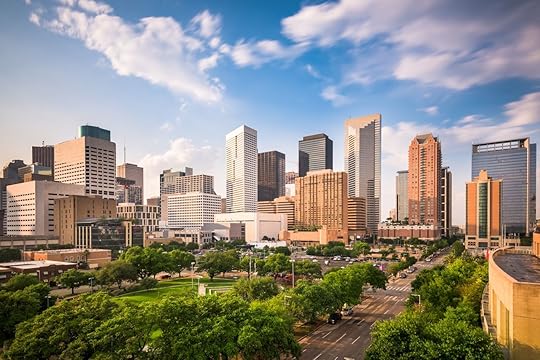
Photo: Sean Pavone/Shutterstock
Houston’s naming history is an easy one to trace. It goes back to Sam Houston, a soldier who fought Mexico in the 1836 Texas Revolution. The land that’s now Houston was sold off the same year after Texas won independence. Sam Houston was named the first president of the Republic of Texas and signed the papers to incorporate the city in 1837. The name stayed after Texas joined the US.
5. Phoenix, Arizona

Photo: Sean Pavone/Shutterstock
Formed in 1868, a small colony was established four miles east of modern-day Phoenix called Swillings Mill after the former Confederate soldier, Jack Swilling, who helped found the colony. The name was changed to Helling Mill City, then East Phoenix, before pioneer Phillip Darrell Duppa suggested the name Phoenix. In his view, the town’s name should evoke the idea of rising from the ruins of a former civilization, and the county that incorporated the area recognized the area of a Phoenix Townsite in 1868. By 1881, Phoenix was officially incorporated as a city.
6. Philadelphia, Pennsylvania

Photo: Sean Pavone/Shutterstock
The naming of Philadelphia probably won’t be too surprising to people with even a passing familiarity with the city. Famously nicknamed “The City of Brotherly Love,” the name Philadelphia actually means “brotherly love” in Greek. It was named by William Penn, who founded the city and the Province of Pennsylvania.
7. San Antonio, Texas
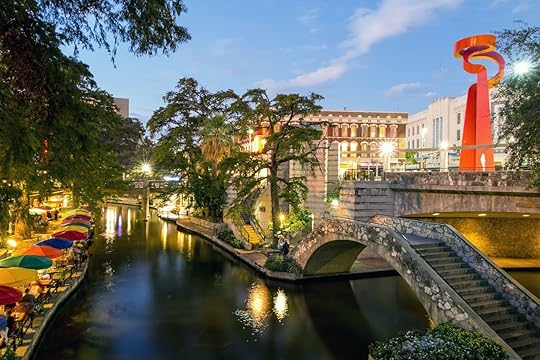
Photo: 232093342/Shutterstock
The Spanish first came to what is now San Antonio in 1691 when it was a camp of the Payaya people. The Spanish established the Mission San Antonio de Valero in 1718, the same mission that would later be known as the Alamo. The area served as a military post under the name San Fernando de Béxar as a county seat of the Republic of Texas until 1837, when it was renamed San Antonio.
8. San Diego, California
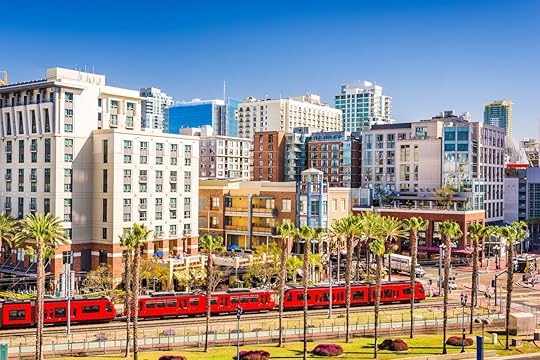
Photo: De Sean Pavone/Shutterstock
Before what is now San Diego got its name, the first European name it received was San Miguel because the first European sailor to see the land, Juan Rodríguez Cabrillo, arrived the day before the feast day of Saint Michael the Archangel in 1542. Sixty years later, explorer Sebastian Vizcaino’s fleet reached San Diego, and he renamed the area after San Diego de Alcalá, the patron saint of his flagship.
9. Dallas, Texas

Photo: Sean Pavone/Shutterstock
Dallas has one of the biggest city name mysteries in the US. The city was named by Presbyterian farmer and lawyer John Neely Bryan in 1841, who founded the area as a trading post to serve both Native Americans and settlers. It’s unclear why he chose the name Dallas, as he left behind no documents or records explaining the decision. According to Works Progress Administration, historical records dug up by the , Bryan’s friends said he named the town “for my friend Dallas.” There’s much speculation as to who that friend was, but no one has been able to nail it down. Bryan died in the Texas State Lunatic Asylum in 1877.
10. San José, California

Photo: Sundry Photography/Shutterstock
In 1776, Captain Juan Bautista de Anza was asked by the Spanish king to lead settlers from New Spain (an area largely encompassing modern-day Mexico) to northern California to establish missions. Anza went past his target point near Monterey and, in 1777, founded El Pueblo de San José de Guadalupe, the first town in the Spanish-owned Nueva California. The San José part of the name comes from Saint Joseph, patron saint of pioneers and travelers, while the Guadalupe comes from the nearby Guadalupe River. Later, it was eventually shortened to just San Jose.
11. Austin, Texas
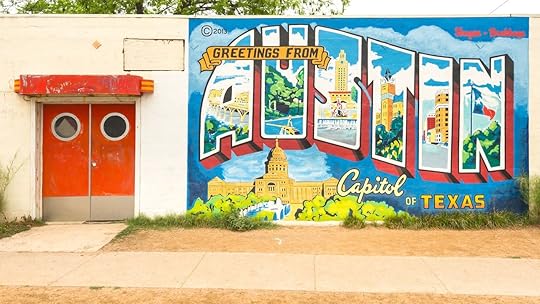
Photo: Steve Lagreca/Shutterstock
Austin was named after the “Father of Texas,” Stephen F. Austin. The Native Americans and Spanish had different names, and the first English speakers to settle on the land in the 1830s named it Waterloo. Founded in 1837 by Anglo-American settlers, the name was changed to Austin in 1839 after it was chosen as the capital of the new Republic of Texas.
12. Jacksonville, Florida

Photo: Sean Pavone/Shutterstock
What is now Jacksonville was once land lived on by the Timucuan people. The French built a fort in the area, then the Spanish, and then the British built the area into a port town called Cowford before the Spanish once again gained control of Florida after the Revolutionary War. Florida became a US territory in 1821, and the name Jacksonville was proposed in honor of Andrew Jackson, the Florida territory’s first provisional governor. Although there is no record of Andrew Jackson having ever visited this part of Florida, the name was agreed on.
13. Fort Worth, Texas
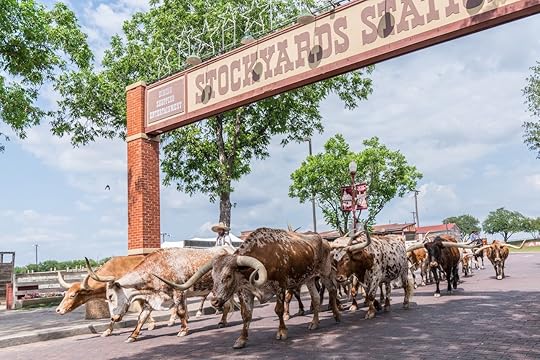
Photo: Paul Brady Photography/Shutterstock
Another city named for a prominent military figure, Fort Worth got its moniker after Mexican War hero General William Jenkins Worth in 1849. Worth had established a fort on the bank of the Trinity River to guard settlers from Native Americans, and the outpost ultimately came to bear his name. Perhaps more intriguing is the city’s nickname of “Panther City,” which stems from a legend wherein a huge panther was found napping in the middle of downtown.
14. San Francisco, California

Photo: prochasson frederic/Shutterstock
Much like San Diego, San Francisco’s name has its roots in the Catholic missions established up and down the California coast. It was named by Father Junipero Serra, who founded many Catholic missions in what is now California. In 1776, he started the Mission San Francisco de Asis, named after Saint Francis of Assisi, and it later became known simply as San Francisco.
15. Columbus, Ohio

Photo: Sean Pavone/Shutterstock
Columbus was named after a figure we’re all familiar with: Christopher Columbus. The city was laid out expressly to create a new Ohio capital in 1812 and incorporated in 1816. A businessman and tavern owner, Joseph Foos, is responsible for the name. He was a fan of Christopher Columbus, and gathered state leaders to petition them to name the city Columbus rather than the popular option at the time, Ohio City.
16. Charlotte, North Carolina
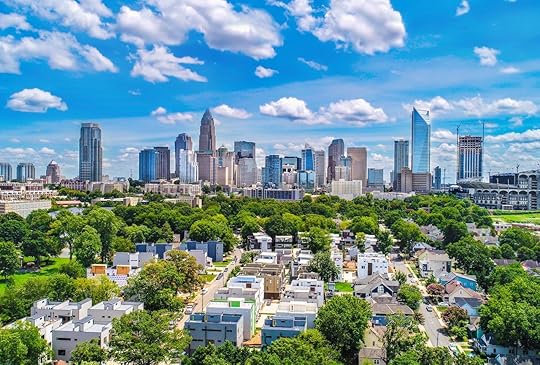
Photo: Kevin Ruck/Shutterstock
Charlotte’s naming history is closely linked to its well-known nickname. Charlotte is called the “Queen City” as an homage to German princess Charlotte of Mecklenburg-Strelitz, who became the wife of King George III and Queen Consort of Great Britain and Ireland in 1761. Colonists founded Charlotte in her name in 1768, and the surrounding county was even named Mecklenburg to honor her birthplace in Germany.
17. Indianapolis, Indiana
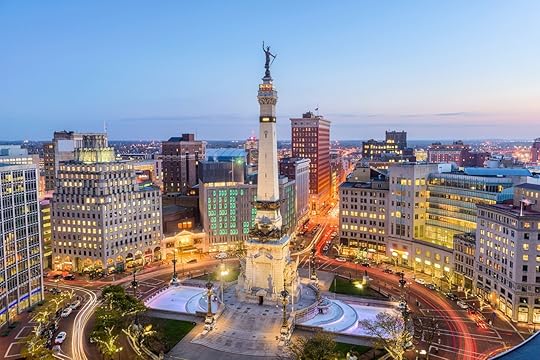
Photo: Sean Pavone/Shutterstock
The derivation of Indianapolis is pretty straightforward. It’s a combination of Indiana, which means “Land of the Indians” and polis, the Greek word for city. It was named in 1821 by Jeremiah Sullivan, a justice of Indiana’s Supreme Court, and replaced the city of Corydon as Indiana’s state capital. Its nickname, “Naptown,” has a few different origin stories. One is that it was coined by jazz musicians in the 1930s due to the “nap” syllable in its name; another suggests it comes from the call letters for the radio station WNAP while, by some accounts, it is a reference to its supposedly boring vibe.
18. Seattle, Washington

Photo: emperorcosar/Shutterstock
Seattle was named for Chief Seattle of the Duwamish and Suquamish tribes, who lived around what is now called Puget Sound. He welcomed the Euro-American settlers who set up villages along the banks of the Sound, and when they established a permanent town on Elliot Bay in 1851, they named it after the friendly chief. The town was initially called New York, then New York-Alki (after the Chinook word for “by-and-by”) before Seattle.
19. Denver, Colorado
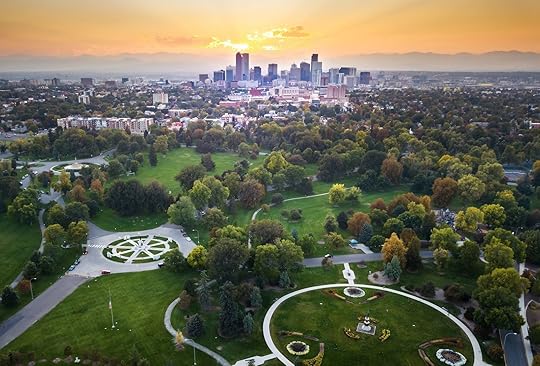
Photo: Creative Family/Shutterstock
Denver was founded in the Kansas Territory in 1858 and was named after the territory’s governor, James W. Denver. Denver was also a general in the Civil War, a lawyer, and a prospective presidential candidate. The city was named after him because it was believed the name would give it the best chance of being designated the county seat — which it was. Its nickname, the “Mile High City,” is a pretty easy one to figure out too, given that Denver’s elevation is one mile.
20. Washington DC
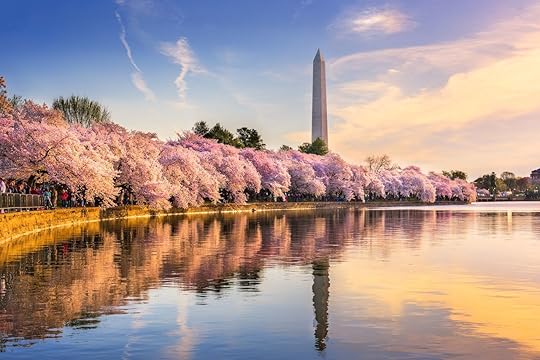
Photo: Sean Pavone/Shutterstock
According to the Residence Act of July 1790, the new capital of the United States would be located somewhere along the Potomac River, and George Washington had the power to choose the exact site. He was also tasked with appointing three commissioners to oversee the city’s development. In 1751, Washington choose 100 square miles of land for the new city, and his chosen commissioners named it after the famed Revolutionary War general and first president. The “District of Columbia” comes from the Territory of Columbia in which it was located, with the “Columbia” name derived from Christopher Columbus. 

More like this: 9 US cities that will make you think you’re in Europe
The post appeared first on Matador Network.

Dress rules in Middle East
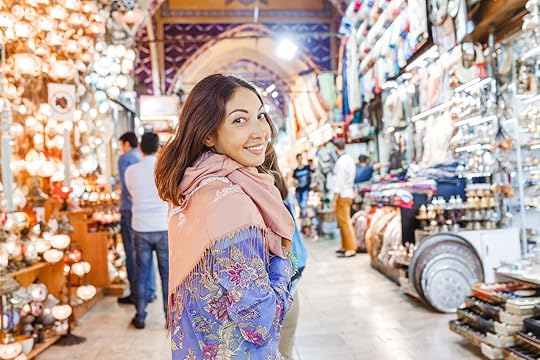
Because of seemingly overwhelming cultural differences, the prospect of traveling to the Middle East is often not considered a viable travel option to many. Those who do take the plunge often opt for an easier, softer intro to the area with a brief layover in Dubai or an all-inclusive vacation package, where the cultural milieu of the Arab world is kept at bay and you can parade in your bikini and speedo without worrying about cultural sensitivity.
Sidestepping these two extremes to experience something truly authentic and spontaneous, while being modestly but stylishly attired, isn’t nearly as difficult as travelers imagine. Just as a few insights into Arab customs and clothing styles help you feel respectful, safe, and welcomed into a local community.
Every Arab country is different in terms of clothing norms, but the common thread among them all is Islam and the special emphasis the religion places on modesty in dress and behavior. The areas covered here include hot spots on the tourist trail for travelers to know what they can and can’t wear in Morocco, Tunisia, Lebanon, Jordan, Turkey, Qatar, the UAE, and Oman.
Morocco

Photo: Yudina_Elena/Shutterstock
While Morocco is predominantly Muslim, it is one of the most occidental-oriented countries in the Arab world. With its proximity to Europe, geography has certainly played a role in fostering this country’s liberal outlook, but what has really made the difference is the fact that, ethnically and culturally, it is Berber at heart.
The indigenous Berber culture, with its traditions of democratically run village councils and women’s rights — no head veil required, freedom to marry who they please, and even annual festivals in the Atlas Mountains where wives could divorce their husbands and enter into new relationships — established a relaxed fashion sense on both the streets of its cities and in the corridors of power where you’re just as likely to see a Muslim cleric in traditional robes as you are a woman wearing the lastest trends.
As a traveler, this means there are many clothing options. The more traditional one (for both men and women) is a local djellaba, a robe-like garment with a hood popular in the Maghreb. If you’re a George Lucas fan, the Moroccan djellaba might remind you of the cowl the Jawas from Star Wars wore on the desert planet of Tatooine. Scoring a dark-brown one (similar to those seen in the movies) made my inner sci-fi nerd ecstatic and simultaneously covered up my American uniform of shorts and a T-shirt — blending in and geeking out at the same time.
While some of the female travelers in Marrakech go the same route by purchasing either a djellaba or a kaftan (basically a more ornate djellaba minus the hood) to cover up and be done with it, most tend to take their clothing cues from the more modern Moroccan ladies — lots of loose tunics paired with leggings, jeans, and long, flowy skirts. A scarf, for comfort and modesty sake, is a must. And while you can wear shorts and tank tops when you’re out and about, you’re likely to get dirty looks from every gender on the spectrum. Swimming suits outside of resorts are not strictly haram (forbidden) but a one piece rather than a bikini is better if you don’t want to attract too much attention. Keeping a cover-up with you for the beach is also a good idea but no matter how humbly you dress wherever you are, women shouldn’t be surprised to get a marriage proposal or two — it’s the Moroccan way of flirting. And if you’re too shy, a faux wedding ring may help discourage any would be Lothario.
Tunisia
The most liberal minded-country in the region is Tunisia. Because the country has been a pioneer in women’s rights since 1956, when polygamy was outlawed and the right to file for divorce was granted to women, along with a host of other basic human rights, such as traveling without the permission of a husband, giving their children their last names, and marrying non-Muslim men without forcing them to convert, women can wear whatever they want without fear of reprisal by the morality police — even bikinis on the beach are allowed. What is not allowed for security reasons is the niqab — the full face veil that reveals only the eyes. Following three suicide bombings in the space of a week in the capital of Tunis in 2019, all face-obscuring veils have been temporarily banned in government buildings until a normal security situation returns.
The most secure and libertarian areas are in the big cities of Tunis, Marsa, Sidi Bou Said, Hammamet, Sousse, and Djerba. Travelers also have more freedom to dress as they please in the bigger cities and less so in the smaller ones or in the countryside, which are usually more conservative.
Turkey
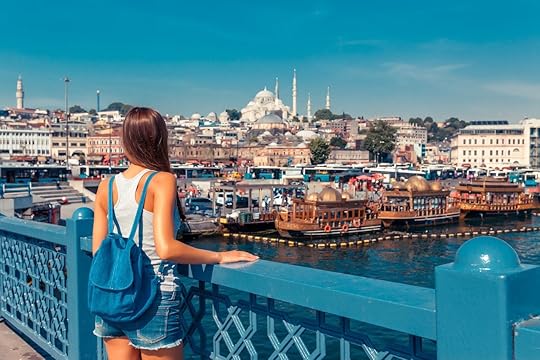
Photo: Oleg_P/Shutterstock
In Turkey, the scene can change from holy to historic to hedonistic faster than you can say Istanbul was once Constantinople. That being the case, keep your swimwear, scarf, and little black dress (a collared shirt and blazer for the guys) handy as you dive into the warm, clear waters of the Aegean Sea in the morning, stroll the colonnaded and cobblestoned streets of the ancient Roman ruins of Ephesus in the afternoon, and in the evening, shake what your mama gave you at one of the trendy nightclubs in the cosmopolitan capital. As always, the bigger the city, the more relaxed the dress code tends to be, especially in Istanbul and Izmir — Ankara is considered more conservative.
Lebanon
Lebanon is a mixed bag. While visiting a friend in Beirut, I saw two fashion extremes side-by-side at a shopping center — one local woman was dressed in an abeyya, a long, flowing black gown topped by a niqab. In stark contrast stood another Lebanese woman right next to her, wearing high heels; tight-fitting, ripped blue jeans; and a cropped, backless blouse. They commingled peacefully in this case, both more interested in finding a bargain than in each other’s outfits.
The ultra chic scene of high heels and bikinis, poolside bars, and international DJs at one of the many swimming clubs is culturally a world away from Dahieh, a predominantly Shia neighborhood and Hezbollah stronghold but geographically just a few kilometers in distance. In Beirut, if you plan to do any exploring at all, it’s best to carry your swimsuit and a scarf in your daypack because you’ll probably need them both. If you’re not sure of the vibe of the neighborhoods you’ll be in, just inquire with your hotel or ask a local.
Jordan
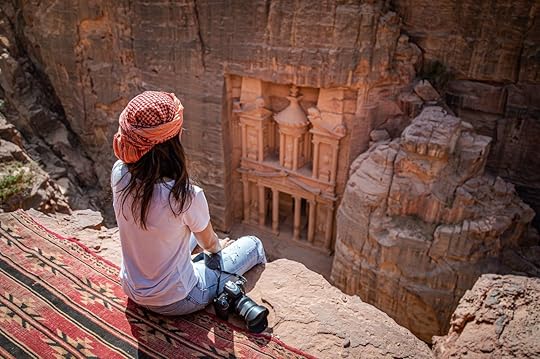
Photo: Zephyr_p/Shutterstock
In Jordan, certain places can be cosmopolitan and open-minded, like Rainbow Street, an entertainment district popular with locals and foreigners in Amman. However, the country is, as a whole, fairly conservative. Although you can dress as provocatively as you’d like, the more you show, the more unwanted attention you’re likely to get. While certainly not always the case, the unfortunate mentality in Jordan toward women seems to be the tighter the clothes, the looser the morality. Dress accordingly, with longer skirts and pants, and avoid tank tops and shorts, to remain unbothered and safe.
United Arab Emirates

Photo: Photobac/Shutterstock
In the UAE, where Dubai is located, you will inevitably find yourself in a mall. Whether it’s for snowboarding or swimming with sharks or even something as banal as shopping, you will not have experienced the Emirati lifestyle until you’ve set foot in one of its shopping centers like the Dubai Mall or the Mall of the Emirates. While you’ll see signs posted at the entrances that say “respectful clothing” is required — meaning no short shorts, bare shoulders, or miniskirts — pretty much anything goes as far as fashion is concerned because of the expat majority (85 percent foreign, 15 percent local). From women in skin-tight dresses and stilettos to Emirati grandmothers in black abeyyas and burqas (a type of local facemask made with metal and indigo), you’ll see it all in the malls in Dubai.
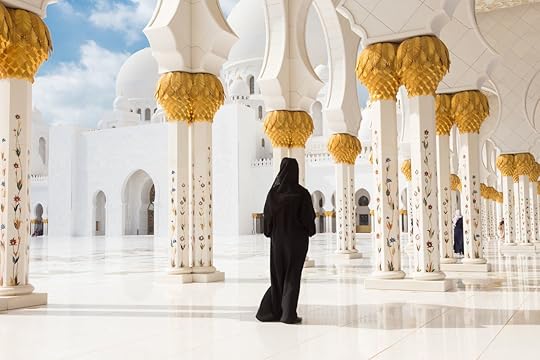
Photo: Matej Kastelic/Shutterstock
Outside of the Dubai bubble, however, this is definitely not the case. Nevertheless, if you inadvertently violate the dress code, you’re much more likely to just get stared at more than usual rather than asked to leave — no morality police here roaming about looking for troublemakers. The same goes for “respectful clothing” beaches. If you want to sunbathe in something more revealing than a burqini, just look for the signs. If there aren’t any, you’re in the clear. If all of the beaches in your area require “respectful clothing” and you’re dying to work on your tan lines, head to any major hotel on the sea and you will more than likely find a place to sun your buns and swim as you please (but definitely not topless).
Topping your list of places to see in the UAE should be Sheikh Zayed Mosque in Abu Dhabi. Shorts or skirts should reach below your knees and your shoulders should be covered. For those who can’t be bothered, the mosque does have loaner abeyyas and shaylas, Islamic headscarves, for women and kanduras, white long-sleeve shirt dresses, for men.
For women, having their own abeyya and shayla combo in their daypack while in the Middle East will make life a lot easier — especially when visiting sites of religious significance or when the inevitable staring gets to be too much. While this may be good advice for the goose, it’s not so for the gander, unfortunately. In the UAE, it is actually heavily frowned upon for anyone except local men to wear a kandura.
Oman
With a little tact and discretion, you should have no problem avoiding any clothing faux pas in the Sultanate of Oman, a fascinating, but often overlooked corner of the Arabian Peninsula that is very welcoming to travelers. In the five years that I lived there, there was only one incident when I was trying to renew my car registration at a police station in the capital of Muscat that I was asked to leave because I was wearing shorts. So if you must conduct any government business, don’t wear shorts, or keep a sarong (known locally as a wazar) in your daypack to cover up if need be.
Not only is a wazar or sarong convenient to cover up, it can also be highly functional as a beach blanket if you find yourself along some of the 1,060 miles of coastline in Oman. Outside of the beach resorts, bikinis and short shorts will draw a crowd and a possible citation from the Tourist Police. Women should swim in a T-shirt and leggings combo to be on the safe side in public areas. For men, boardshorts are acceptable. Elsewhere, both ladies and gentlemen should go light and loose with cotton, chambray, and linen — covering shoulders and knees.
While it’s cool for foreign men to sport a kummah, an embroidered Omani cap, they should definitely not wear a dishdasha. Like the Emiratis, the Omanis are sensitive about their national dress. Even if it is worn out of respect, it could easily be assumed that you are mocking them.
Qatar
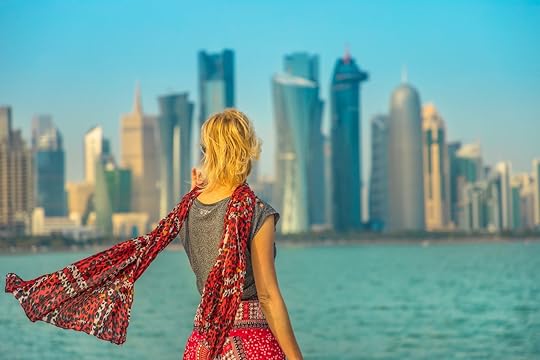
Photo: Benny Marty/Shutterstock
What is considered disrespectful dress in Oman is also considered disrespectful in Qatar. In shopping malls, souqs, and along the waterfront promenade — basically all public spaces including public beaches — bare shoulders are a big no-no as are any skirts, shorts, or dresses above the knee. In hotel and resort areas, however, Western standards of dress and poolside attire apply. Outside of these areas, tank tops and singlets are actually fine as long as you cover up with a scarf or a pashmina. The key to covering up and staying cool in the Middle East is choosing breathable fabrics, so pack cotton, linen, and silk. To keep the airflow going in your footwear, wear sandals, cotton tennis shoes, or netted runners. Don’t forget a cardigan because like most countries in the Gulf Country Council, the Qataris like to keep the temperature inside just above freezing. 

More like this: Why Dubai is the best trip to dip your toes in Arab culture
The post What you can and can’t wear in the Arab world as travelers appeared first on Matador Network.

Battle for the Lake
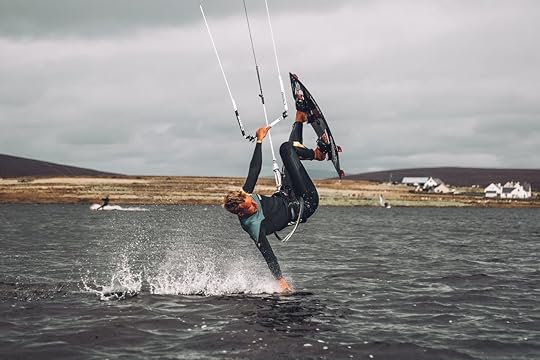
From September 27 to September 29, on a tiny, breathtaking island off the northwest coast of Ireland, the world’s top kitesurfers will join together with renowned musicians, fans of multiple water sports, and spectators for an off-the-wall festival.
Now in it’s 10th year, Battle for the Lake on Achill Island combines — somewhat unexpectedly — wind- and wave-powered water sports with live music. Surfing, stand-up paddleboarding, windsurfing, and kiteboarding are all on the menu over the course of the adrenaline-fueled, three-day weekend.
Ireland is an amazing place for kitesurfing

Photo: wavebreakmedia/Shutterstock
When it comes to outdoor pursuits, the Emerald Isle has long been renowned for its world-class hiking trails and wave-smashed coastline that is attracting more and more surfers undeterred by the frigid temperatures. Lesser known is Ireland’s phenomenal potential as a kiteboarding location.
Yet it shouldn’t come as a surprise to anyone who’s ever so much as stepped foot on Irish soil, since the country is rich in one thing that makes kiteboarders very happy: wind. From Dublin to Donegal and Inchydoney to Achill Island, the country’s windswept coastline has caught the attention of world-traveling kitesurfers and industry professionals alike.
The island of Achill lies along the Wild Atlantic Way, a driving route along Ireland’s west coast celebrated for its stunning scenery. The beaches of Achill Island in County Mayo have gained international recognition as some of the most beautiful in the world.
Beyond gorgeous landscapes, Achill was chosen for the event because of its insane wind and water conditions. Frequent Atlantic squalls bring consistent wind and unadulterated swell to Achill’s shores season after season. Combined with the island’s iconic lake, it’s no wonder the event is popping up on the radar of some of the biggest names in kiteboarding.
Some of the world’s top pro kiters
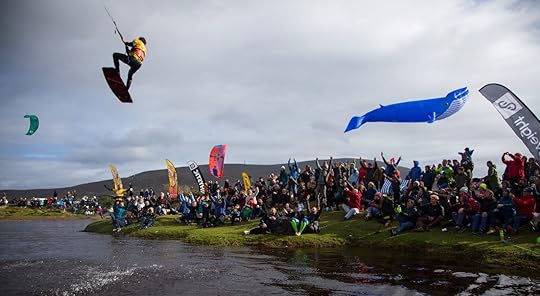
Photo: Pure Magic Achill Island
This month’s event will bring big-time pro riders like Kevin Langeree, Ruben Lenten, and Nick Jacobsen. Jacobsen is the daredevil who famously jumped off Richard Branson’s Great House on Necker Island with his kite and, more recently, jumped off the Burj Al Arab in Dubai.
Angely Bouillot, who in the past year has come to be known by the kite world as the most fearless girl in kiteboarding, will also be in attendance. We hope she’ll be doing some of her signature huge megaloops at the event.
While not as exotic as jumping off Branson’s Necker Island house or Dubai’s Burj Al Arab, the Achill event is sure to impress anyway. The planned “Wow Show” is a groundbreaking freestyle competition which rightfully can’t be compared to any other — because, quite frankly, it isn’t like any other.
The Wow Show encourages riders to show their creativity, personality, and, of course, their badass skills in an effort to “wow the crowd.” They can do this by jumping over them or into them, by pulling tricks with a pint in hand, and essentially doing whatever is needed to make people think, “Yup, this person is an absolute lunatic.”
Excitement on and off the water
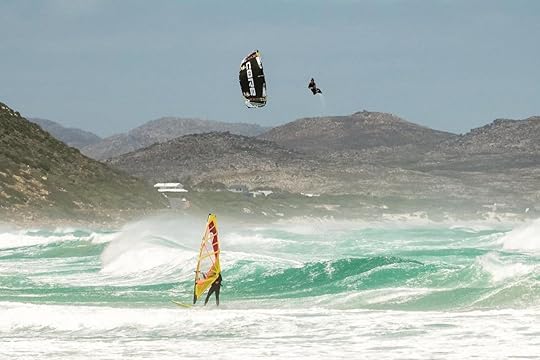
Photo: Battle for the lake Achill Island/Facebook
While it’s called the Battle for the Lake, you can also get out onto the shoreline to watch some spectacular windsurfing, surfing, and stand-up paddling. From stand-up paddlers working the waves as if they were on a spindly shortboard to longboarders doing handstands, it promises to be a good show.
When the day’s on-water action wraps up, the evening’s live music and after-hours antics will slide into gear. This year’s music lineup will see Ireland’s legendary singer-songwriter Mundy headline alongside the effervescent beats of Daithí, Attention Bébé, and Lypton Village. You can see the full lineup here.
To complement the tunes, there’s also an enormous fireworks display and fire dancing show to look forward to on Saturday night. From what the hosts have revealed so far — promising that “the lights will go off…it will be dark…it will be silent…then far away a pipe will be heard…and the lake will go on FIRE!” — the drama will be high for this one.
Should you opt to book your ticket and go, you can camp out under the starry skies of the Wild Atlantic Way or book yourself into one of the local bed and breakfasts. A quick search also showed quite a few Airbnbs still available for that September weekend. Tickets for 2019 Battle for the Lake are on sale now.
Other watersports and music festivals
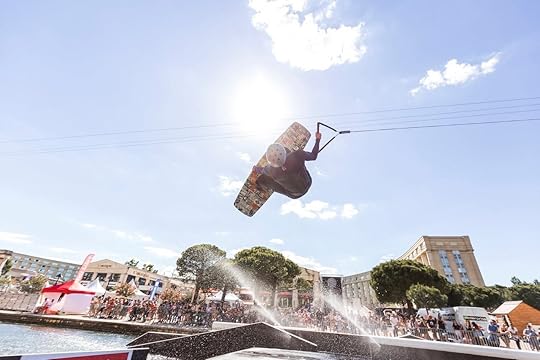
Photo: FISE/Facebook
If you don’t have a chance to check out the Battle for the Lake at the end of this month, there are other opportunities to enjoy extreme water sports and music. Battle for the Lake echoes the spread of this summer’s outrageous FISE festival in Montpellier, just one stop in a world tour featuring BMX (bicycle motocross), wakeboarding, skating, and music — drawing some 600,000 attendees.
While perhaps not as extreme as Battle for the Lake, you can find other events like this all over the world. The Netherland’s Madnes Festival last July brought together kiteboarding, windsurfing, surfing, skating, BMX, and more than 30 other sports activities with live music. The Philippines’ Malasimbo Festival is a music and crafts event tied to an extreme kiteboarding safari around Puerto Galera’s islands. The next Malasimbo will be at the start of March 2020. 

More like this: Jamaica’s Reggae Marathon brings together the best of the island in one epic race
The post Ireland’s upcoming water sports and music festival will be insane appeared first on Matador Network.

Matador Network's Blog
- Matador Network's profile
- 6 followers



